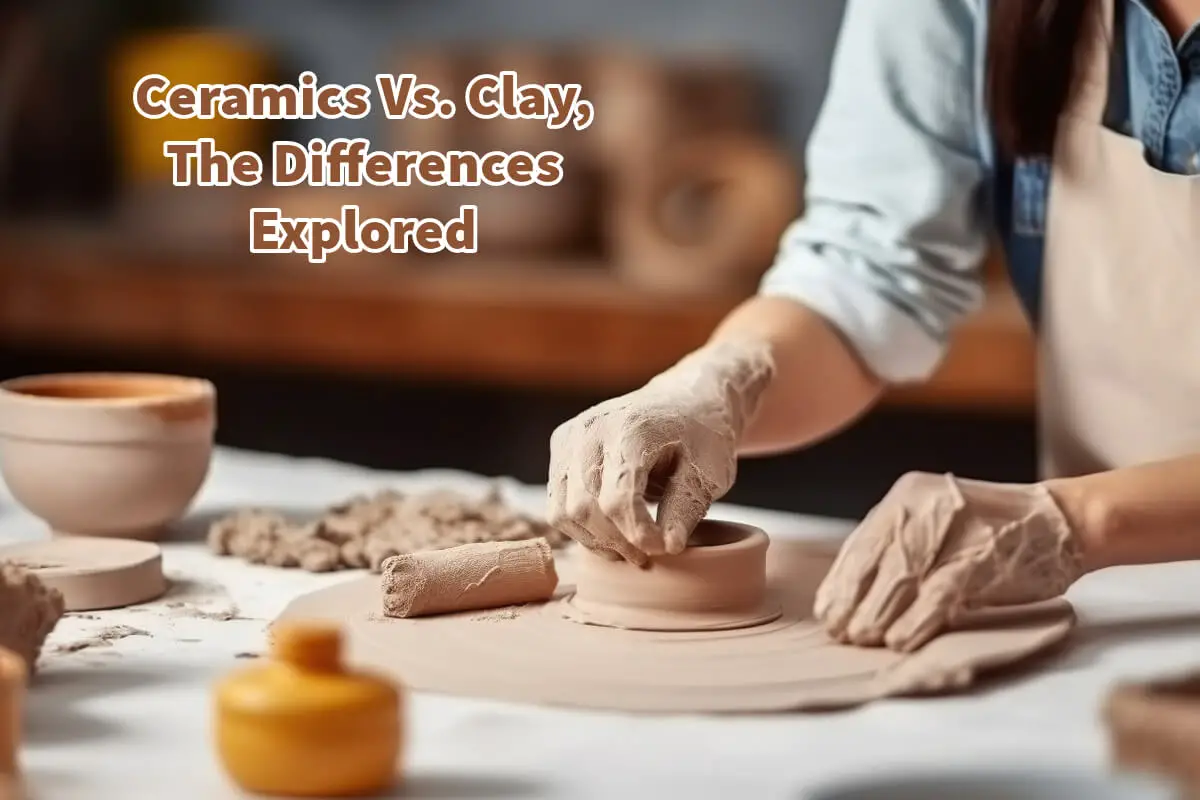The distinction between ceramics and clay can be somewhat perplexing, as the two terms are frequently used as if identical. Sometimes there is some confusion between the two words and terms.
Ceramics and clay refer to different phases in a captivating process of transformation that has roots extending deep into human history. Though both are integral to the worlds of pottery and sculpture, they are differentiated by their unique properties, specific uses, and the underlying scientific principles that govern their transformation.
Table of Contents
- Ceramics Vs. Clay: Understanding The Intricacies Of Earth And Fire
- The Transformation: From Clay To Ceramics
- Practical Applications
- Clay Vs. Ceramics In Artistry
- Frequently Asked Questions
- Related Content
Ceramics Vs. Clay: Understanding The Intricacies Of Earth And Fire
The terms “ceramics” and “clay” are often used interchangeably, but they signify different stages in a fascinating transformative process that has been part of human civilization for millennia. While both belong to pottery and sculpture, their properties, applications, and even the science underlying them are distinct.
Read on as we explore the nuanced differences between clay and ceramics, emphasizing their unique characteristics, transformations, and practical uses.
What Is Clay?
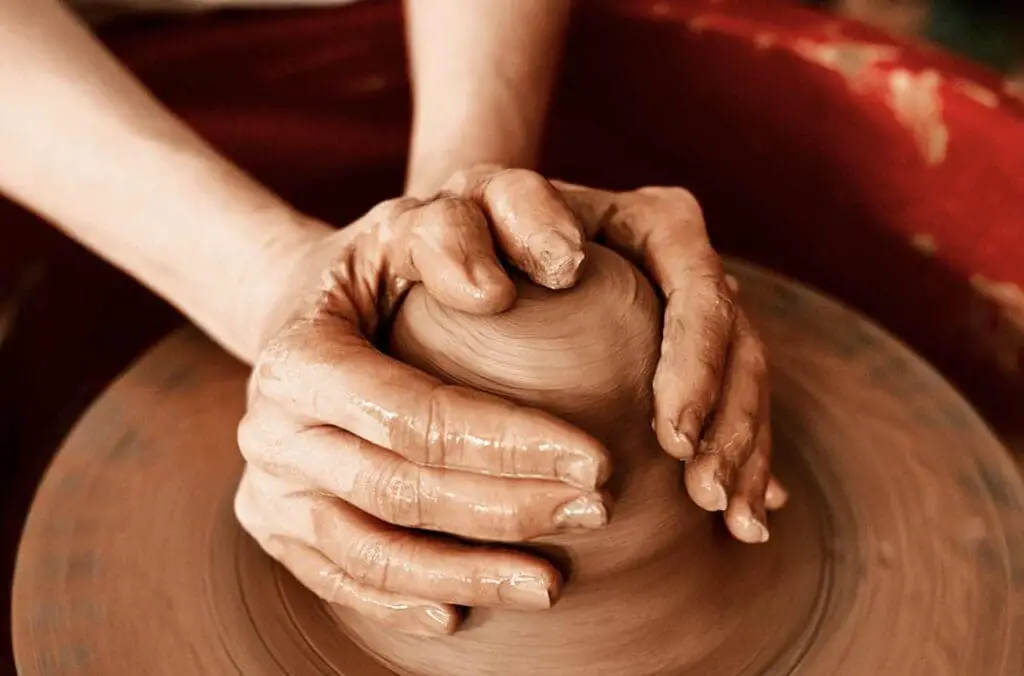
Clay is a naturally occurring material composed of fine-grained minerals, usually derived from the weathering of rocks. It is plastic when wet, hard when dry, and rock-like when fired at high temperatures. Clays can vary in composition but usually contain alumina and silica as their primary ingredients.
Properties Of Clay
- Plasticity: The most defining feature of clay is its plasticity, which allows it to be molded into various shapes.
- Porosity: Clay is porous, which means it can absorb water.
- Thermal Stability: When fired, it can withstand high temperatures but undergo irreversible changes.
What Are Ceramics?
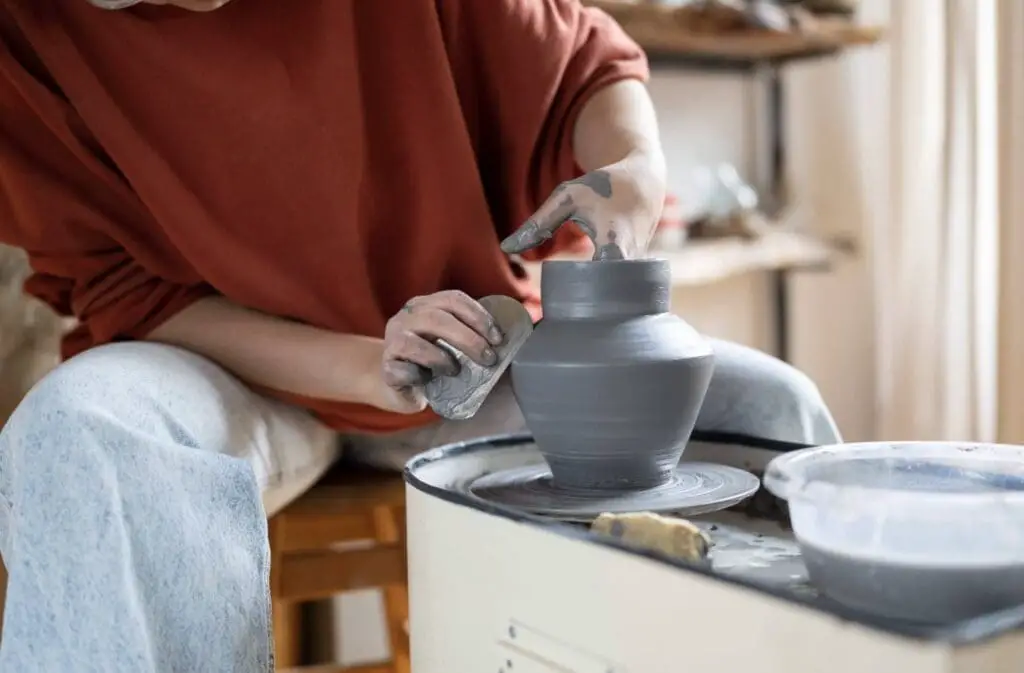
Ceramics encompass a broad category of inorganic, non-metallic materials permanently altered through high-temperature firing. While clay is a type of ceramic, ceramics can also be formed from other materials like talc, zirconia, or even certain types of glass.
Properties Of Ceramics
- Hardness: Ceramics are typically complex and brittle.
- Low Electrical and Thermal Conductivity: They are poor conductors of electricity and heat, making them ideal for insulation.
- Chemical Stability: Highly resistant to most acids and alkalis.
The Transformation: From Clay To Ceramics
One of the most profound aspects of this topic is the transformative journey from clay to ceramics, primarily facilitated by firing in a kiln. At approximately 660 degrees Fahrenheit, the chemically bonded water in the clay evaporates.
The clay is entirely dehydrated when the temperature hits around 930 degrees Fahrenheit. From then on, it is no longer clay but a ceramic material. This change is not just physical; it’s chemical and irreversible.
The Science Behind The Transformation Of Clay To Ceramics
The shift from clay to ceramics isn’t merely about water loss. At higher temperatures—generally above 1112 degrees Fahrenheit—the clay undergoes vitrification, where the silica and alumina particles melt and fuse to form a glass-like structure.
This is the stage where clay gains the properties of ceramics—hardness, brittleness, and thermal stability.
Practical Applications
There are many practical applications between the clay and the ceramics. Here are some different ways they are being used.
Clay In Its Natural Form
- Sculpting: Ideal for creating sculptures and models.
- Pottery: Used widely in hand-building techniques like pinching, coiling, and slab construction.
- Cosmetics and Pharmaceuticals: Bentonite clay, for example, is used in face masks and as a binding agent in medications.
Ceramics
- Tiles and Bricks: These are often machine-made, employing extrusion and slip-casting techniques.
- Electronics: Ceramics are used in capacitors, insulators, and advanced electronics like semiconductors.
- Medical Implants: Materials like zirconia are used in dental implants and joint replacements.
Clay Vs. Ceramics In Artistry
Artistically, clay provides the flexibility and adaptability for the creator to shape and reshape the material, giving form to their vision. Once transformed into ceramics, however, the piece becomes permanent, preserving the art for posterity.
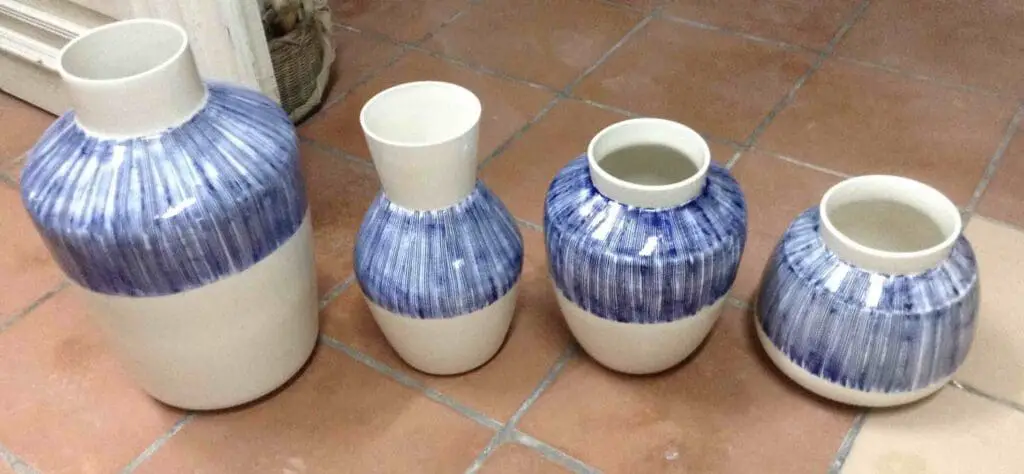
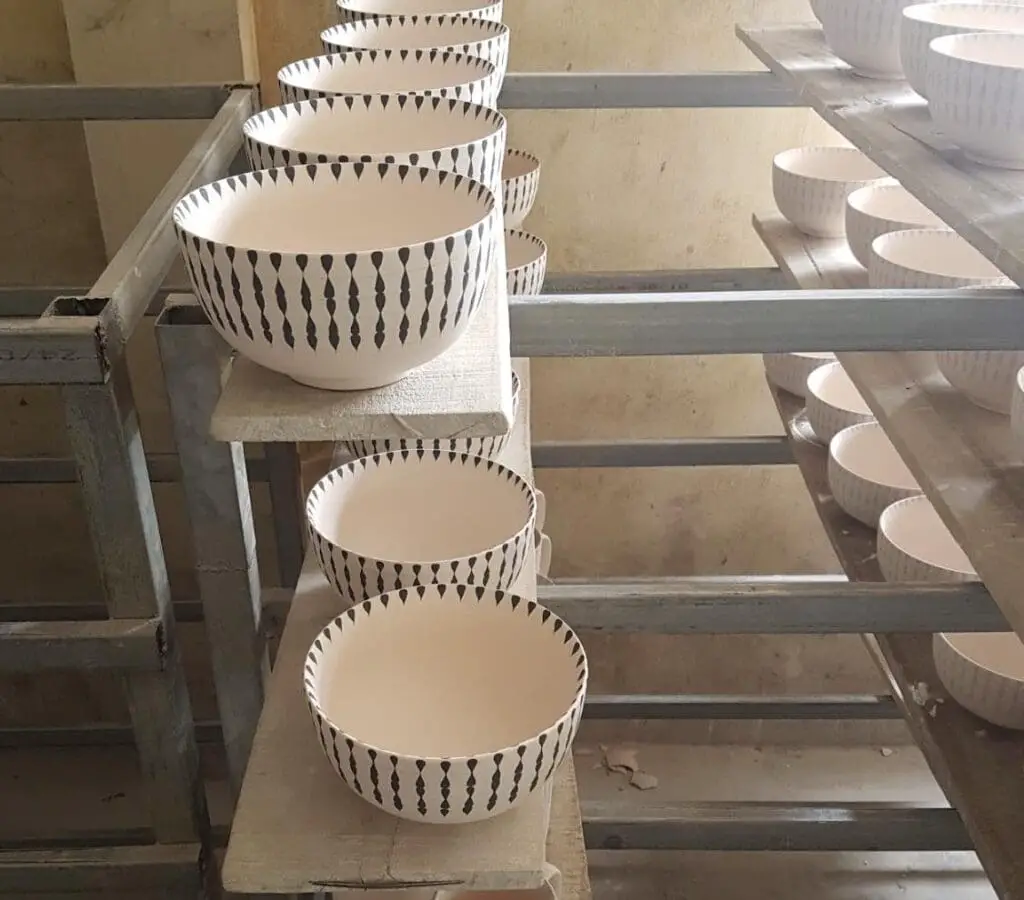
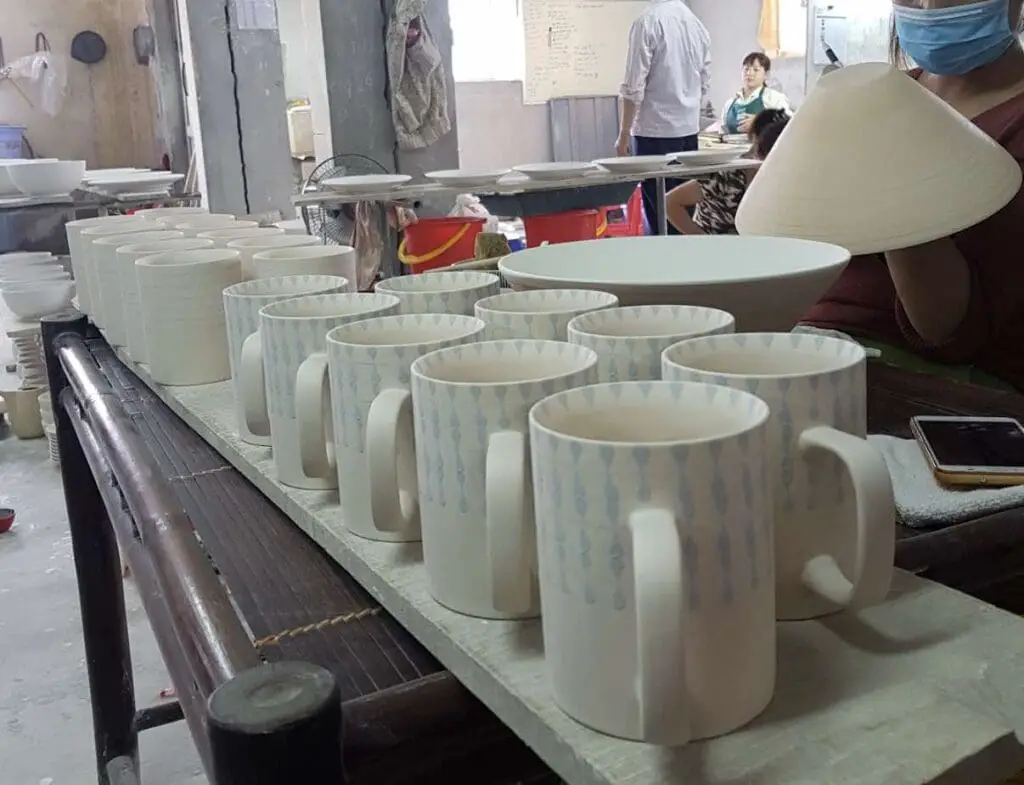
Why The Distinction Between Clay And Ceramic Matters
Understanding the difference between clay and ceramics is crucial for several reasons:
- Material Selection: Knowing the properties of clay and ceramics helps choose the suitable material for specific applications.
- Energy Efficiency: Different ceramics require different firing temperatures, affecting energy consumption.
- Longevity and Care: While clay objects are more susceptible to wear and tear, ceramics are more durable but also brittle, making them susceptible to cracking or shattering upon impact.
- Technological Applications: With the increasing use of ceramics in electronics and medical fields, a clear understanding of how they differ from clay is essential for innovation and safety.
Both clay and ceramics have unique places in history, art, and technology. Clay, in its raw, malleable form, offers an almost poetic potential for creation. Ceramics, on the other hand, represent the permanence and enduring nature of what human hands can craft from the earth.
Each has its domain of applications and advantages, intricacies, and limitations. By understanding these differences, we can more effectively harness these ancient materials for various modern needs.
We would love to talk to you if you want to see how we can help you with any of your clay or ceramic production.
Find out more about how Mondoro can help you create, develop, and manufacture excellent home decor and furniture products – don’t hesitate to contact me, Anita. Check out my email by clicking here or become a part of our community and join our newsletter by clicking here.
Mondoro gives out a FREE Lookbook to anyone interested. You can receive a copy of our latest Lookbook by clicking here.
Listen to our Podcast called Global Trade Gal. You can find it on all major podcast platforms. Try out listening to one of our podcasts by clicking here.
Subscribe to our Mondoro Company Limited YouTube Channel with great videos and information by clicking here.
Frequently Asked Questions
What is the fundamental difference between ceramics and clay?
The key difference lies in their composition and transformation process. Clay is a raw material, while ceramics are the end product after the clay has undergone firing or baking.
How are ceramics and clay related in the context of pottery and sculpture?
Clay is the primary material used in crafting pottery and sculpture. Ceramics, on the other hand, represent the finished and fired products, such as pots, tiles, and figurines.
Can all types of clay be considered ceramics?
No, not all types of clay transform into ceramics. Ceramics are formed when specific types of clay, known as earthenware, stoneware, or porcelain, undergo a firing process.
What is the firing process, and how does it relate to ceramics?
Firing is the process of heating clay to high temperatures, transforming it into a hardened, durable material. This transformation is what distinguishes ceramics from the malleable state of raw clay.
Are ceramics and pottery synonymous terms?
While often used interchangeably, they are not synonymous. Pottery refers to the process of creating objects from clay, whereas ceramics encompass the broader category of fired and hardened clay objects.
What are the distinct properties of raw clay as opposed to fired ceramics?
Raw clay is pliable and moldable, allowing for the creation of various forms. Ceramics, after firing, exhibit hardness, strength, and resistance to heat, making them suitable for functional and decorative purposes.
Are there different types of ceramics, and do they have unique characteristics?
Yes, there are various types of ceramics, including earthenware, stoneware, and porcelain. Each type has distinct properties, such as color, porosity, and firing temperatures.
Can you use ceramics and clay interchangeably in art projects?
While clay is the starting point for many artistic endeavors, the terms cannot be used interchangeably. Clay represents the raw material, while ceramics denote the final, fired creations.
What role does glazing play in the world of ceramics?
Glazing is a post-firing process where a thin layer of glass is applied to ceramics. It serves both decorative and functional purposes, enhancing the appearance and providing a protective coating.
Are there any historical or cultural aspects that differentiate ceramics from clay?
Throughout history, ceramics have held cultural significance as practical items, art pieces, and symbols of craftsmanship. The transformation of clay into ceramics has been a cornerstone in various civilizations, reflecting both utility and artistic expression.
Related Content
What Is Shagreen? Manufacturing Faux Shagreen Home Decor Products
Shagreen is a rawhide that has small bumps on the skin’s surface. The shagreen hide was traditionally from shark and stingray skins. As sharks and stingrays are endangered species, we manufacture our shagreen with faux shagreen.
You can discover more by reading What Is Shagreen? Manufacturing Faux Shagreen Home Decor Products by clicking here.
What is the Ankole-Watusi Big-horned African Cow and How Is It Used in Home Decor Products?
The Ankole-Watusi big-horn African cow is a medium-sized cattle that have very longhorns. These cows are found mainly in Africa. The cow is not an endangered species, so cows are sold as meat, and the horns are also sold to make home decor and jewelry items. This ensures that every part of the cow is somehow used and nothing goes to waste.
You can discover more by reading our blog The Ankole-Watusi Big-horned African Cow and Home Decor Products by clicking here.
What Are The Agate Natural Agate Stone Beads Used For Home Decor Products?
Agate is a natural rock formation used as a decorative element for centuries. It can be found in many parts of the world, and agate stone has many different kinds and colors. In the Asia practice of Feng Shui, it can help us strike a balance in life and for good luck.
You can find out more by reading our blog Natural Agate Stone Beads For Home Decor Products by clicking here.

